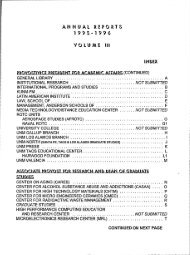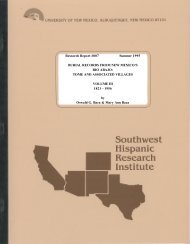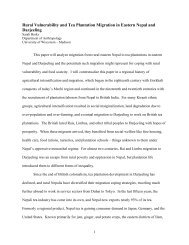i Jeffrey L. Engbers Health Exercise and Sports Science This ...
i Jeffrey L. Engbers Health Exercise and Sports Science This ...
i Jeffrey L. Engbers Health Exercise and Sports Science This ...
You also want an ePaper? Increase the reach of your titles
YUMPU automatically turns print PDFs into web optimized ePapers that Google loves.
The first intercollegiate athletic competition was held in 1852, when boats from<br />
Harvard <strong>and</strong> Yale raced on Lake Winnipesaukee in New Hampshire (Shulman & Bowen,<br />
2001). As the popularity of <strong>and</strong> problems within athletics increased, the NCAA was<br />
formed in 1906. At the time of its inception, the purpose of the NCAA was to regulate<br />
football rules - partly due to an increase in violence (“NCAA History,” n.d.a). Although<br />
the NCAA was formed as only a rule-making body for athletic programs at elite colleges<br />
<strong>and</strong> universities (Washington, 2004), it exp<strong>and</strong>ed to include championships. In 1921 they<br />
held their first championships: the National Collegiate Track <strong>and</strong> Field Meet. For the next<br />
50 years additional rules committees were steadily formed, more championships held,<br />
<strong>and</strong> the membership grew (“NCAA History,” n.d.a). In 1973 the association's<br />
membership was divided into three competitive Divisions – I, II, <strong>and</strong> III. Just five years<br />
later subdivisions 1-A <strong>and</strong> 1-AA were created under Division I (“NCAA History,”<br />
n.d.a).<br />
Division III institutions do not allow athletic-based scholarships (NCAA, 2007).<br />
These institutions must sponsor at least five sports for men <strong>and</strong> five for women. There are<br />
also minimum competition requirements for each sport. Emphasis at this level is placed<br />
on regional in-season <strong>and</strong> conference competition as opposed to national competition.<br />
Student-athletes receive no financial aid related to their athletic ability. The athletic<br />
department is funded like any other department on campus. Of the three NCAA<br />
Divisions, Division III emphasizes the concept of the student-athlete the most (NCAA,<br />
2007). The following descriptions of Division I <strong>and</strong> II show the differences of Division<br />
III.<br />
16
















